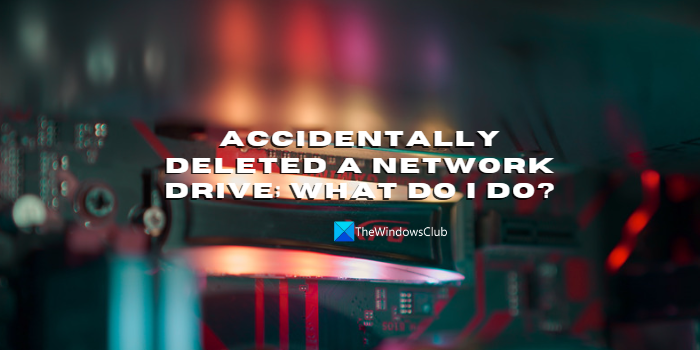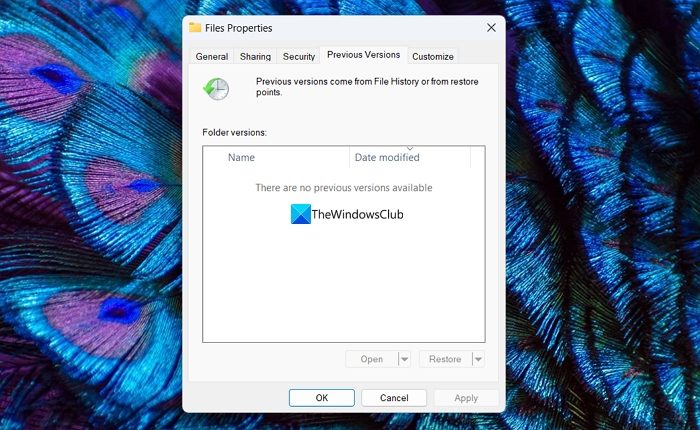In this guide, we show you what you can do if you have accidentally deleted a network drive on your Windows computer.

A network drive is a storage location on Windows that can be accessible over a network connection. It can be a hard drive, a shared folder on a computer, or a storage device managed as a server. You can access the files and folders stored on a drive when it is connected over a network connection. Businesses and organizations use network drives to share files and data across networks. They provide a convenient way to share data across the network and allow multiple users to access and collaborate on files and data stored in a central location. Since the data is crucial for the normal functioning of the team or organization, accidents are bound to happen. You might even delete the network drive accidentally if you are not careful.
Accidentally deleted a Network Drive; What do I do?
If you have accidentally deleted a network drive, you can follow the below methods to fix the issue or solve the problems that are created with it.
- Check the Recycle Bin
- Check the Previous version of the files
- Contact your IT department for backups
- Use a data recovery software
Let’s get into the details of each method and fix the issue.
1] Check the Recycle Bin
Generally, every network drive is mapped to a drive letter. If you have accidentally deleted a network drive, check your recycle bin, if there are any traces of the files from the network drive are there which you can locate them using the drive letter. If you find any files from that network drive in the recycle bin, you can try to restore them to the original location. This way you can recover at least some files if there are moved to recycle bin when you have accidentally deleted the network drive.
2] Check the Previous versions of the files

Windows operating system creates copies of the previous versions of the files in the background. You can use those previous versions to restore the files you have lost when you have accidentally deleted a network drive. To see if there are any previous versions of the files are available, right-click on the folder where the files were located. Select Properties. It opens the File Properties window. Click on the Previous Versions tab. If there are any previous versions of the files available, you will see the list there. Select the files you want to restore and click on the Restore button. They will be restored to the original folder. Click on Apply and OK to save the changes.
3] Contact your IT department for backups
If your network drives are managed by the IT department, you can check with the department to see if they have any backups of the data. Generally, for the safety of the data and files, the IT departments save copies of the files in a safer location in case of any accidents to recover.
4] Use a data recovery software
If none of the above methods help you in recovering the data from an accidentally deleted network drive, you can use professional data recovery programs. There are various programs that do a great job of recovering every file from the lost data of the drives. Use them and recover the data, It takes a lot of time depending on the size of the data, but it is completely worth it.
Read: How to map a Network Drive or add an FTP Drive
How to recover a deleted folder from a Network Drive Windows?
To recover a deleted folder from a network drive, you can recover it using the previous version of the folder. You can access them through the Properties of the folder in which the file or folder you want to recover is previously deleted. You can also use a data recovery software to recover the folder.
How do I enable Recycle Bin on my Network Drive?
To enable the Recycle Bin on your network drive, go to Control Panel and then to Shared Folder. Select a shared folder and click Edit. Then, check the box beside Enable Recycle Bin. You can even restrict the access of the Recycle Bin to administrators by checking the box beside Restrict access to administrators. Click Ok to save changes.
Related read: Unable to map Network drive in Windows.